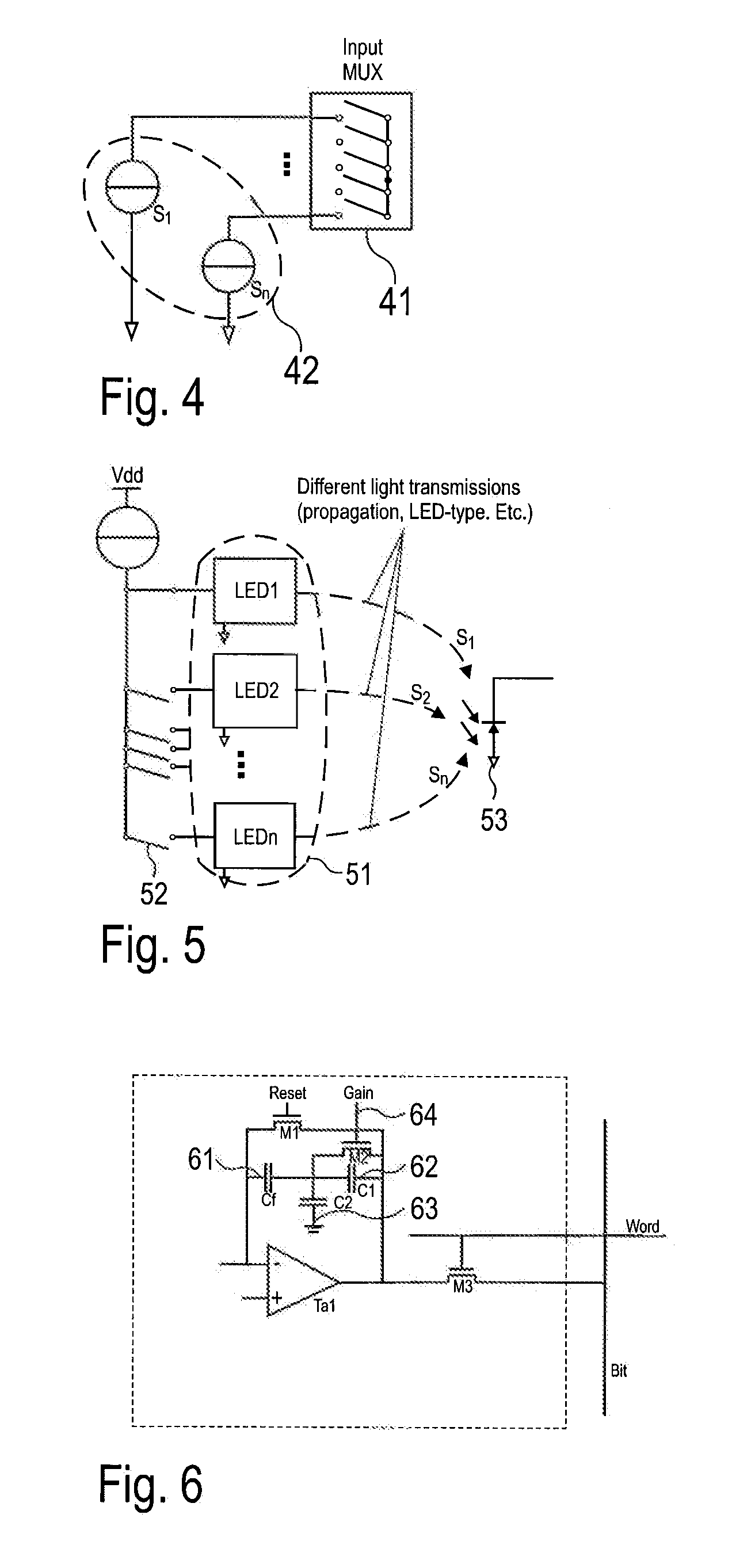Circuit and method for performing arithmetic operations on current signals
a current signal and circuit technology, applied in the field of circuits and methods for performing arithmetic operations on current signals, can solve the problems of communication or even a complete host-slave interaction, rfid systems can be very sensitive to rf distortion, and the dynamic range of a-d conversion is limited
- Summary
- Abstract
- Description
- Claims
- Application Information
AI Technical Summary
Benefits of technology
Problems solved by technology
Method used
Image
Examples
Embodiment Construction
[0054]FIG. 1 shows one embodiment of the circuit. The circuit comprises an input means 11 being configured to selectively receive a current from a plurality of currents; a first current mirror 12 with mirror ratio m; a second current mirror 13; a third current mirror 14; a cross-multiplexer 15; and a differential capacitive transimpedance amplifier 16. A first capacitance 17 and a first switching element 18 are connected in parallel to the negative input port and a first output port of the differential capacitive transimpedance amplifier 16. A second capacitance 19 and a second switching element 110 are connected in parallel to the positive input port and a second output port of the differential capacitive transimpedance amplifier 16. The input means 11 are connected to the input port of the first current mirror 12. The output port of the first current mirror 12 is connected the input ports of the second 13 and third 14 current mirror. The output port of the second current mirror 13...
PUM
 Login to View More
Login to View More Abstract
Description
Claims
Application Information
 Login to View More
Login to View More - R&D
- Intellectual Property
- Life Sciences
- Materials
- Tech Scout
- Unparalleled Data Quality
- Higher Quality Content
- 60% Fewer Hallucinations
Browse by: Latest US Patents, China's latest patents, Technical Efficacy Thesaurus, Application Domain, Technology Topic, Popular Technical Reports.
© 2025 PatSnap. All rights reserved.Legal|Privacy policy|Modern Slavery Act Transparency Statement|Sitemap|About US| Contact US: help@patsnap.com



